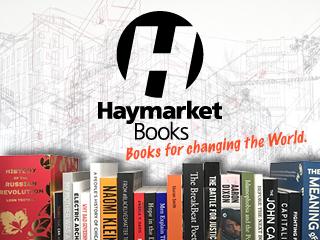Getting by with a little help from their Fed?
looks at what the Federal Reserve can accomplish in helping the economy--and what it can't.
CAN THE Federal Reserve Bank save the U.S. economy? That's the hope and prayer of growing numbers of Wall Street executives and politicians as the world financial crisis continues to spin out of control.
The question is whether the Fed's unprecedented efforts to shove money into U.S. banks will be sufficient to induce those banks to lend money out.
It was bankers' fear to lend money to the investment bank Bear Stearns that led to that firm's collapse, despite a pledge by the Federal Reserve to make good on $30 billion of Bear's assets based on shaky mortgage-backed securities.
In the end, the Fed forced Bear to agree to sell itself to JPMorgan Chase for just $236 million, even though the company had claimed a book value of $80 billion a week before (the offer was later raised fivefold, to $10 a share, but that's still a mind-boggling discount).
The Bear deal was only one of a series of recent dramatic actions by the Fed. Under Chair Ben Bernanke, the U.S.'s central bank has repeatedly cut interest rates, set up special loan auctions for commercial banks, and agreed to accept unsellable mortgage-backed securities as collateral--all in an attempt to keep credit flowing between banks.
And after the collapse of Bear Stearns, Bernanke invoked a Depression-era law allowing the Fed to make emergency loans to investment banks--which, unlike commercial banks, don't make deposits with the Federal Reserve and are mostly beyond its regulatory powers.
That could put taxpayers on the hook for the banks' mortgage-related losses--just as they were when the savings-and-loan industry collapsed in the early 1990s. Back then, the federal government created the Resolution Trust Corporation to absorb losses that amounted to $250 billion in today's dollars.
But the bill for today's financial crisis will be vastly greater. Now comes a report that the Fed--along with the European Central Bank and the Bank of England--may buy up mortgage-backed securities outright in internationally coordinated actions.
There is, in theory, no limit to what the Federal Reserve can spend, since Bernanke and the Federal Reserve Board can have the U.S. Treasury print up as many U.S. dollars as they need. But adding money to the system risks increasing inflation, which has already pushed the costs of food and fuel to record levels--and may lead to greater financial instability internationally if foreign banks and governments dump the dollar because its value is declining.
But the Fed, which for nearly 30 years has been the scourge of inflation, is willing to chance it today, given the alternative--a meltdown of the international financial system as banks hoard cash rather than lend it out.
WHETHER OR not all this will add up to a rescue of the U.S. economy is another question. If central banks could prevent recessions with aggressive policy actions, economic slumps would have faded into history long ago.
To understand both the potential and limitations of the Fed, it's helpful to take a look at the role of central banks. As economists Makoto Itoh and Costas Lapavitsas point out in their book Political Economy of Money and Finance, central banks emerged spontaneously as capitalism developed over the last 300 years.
One bank in each country gradually came to play the role of lender of last resort by maintaining sufficient gold reserves and issuing bank notes that could be exchanged reliably for gold. Central banks also came to protect the nation's reserve of foreign exchange needed for international trade.
It wasn't until after the financial chaos of Wall Street's panic of 1907 that U.S. lawmakers moved to establish a modern central bank. Created in 1913, the Federal Reserve System consists of 12 regional banks and a seven-member Board of Governors appointed by the president. With 14-year terms, the board of governors is supposedly independent of partisan politics.
The power of the Fed comes from its ability to set interest rates as well as its "open market operations"--buying and selling securities, mainly U.S. Treasury bonds. Through these mechanisms and other means, the Fed can control the money supply. This means the Fed can help stimulate the economy by making it easier for businesses and individuals to borrow--and can rein in an economy in which growth has led to inflation or speculative bubbles.
When the U.S. forced an end to the gold standard in international banking in 1971, central banks became more important to the world economy. The U.S., Europe and Japan sought to manage a system of floating exchange rates, with the dollar remaining the reserve currency of the world economy.
The Fed assumed an even greater importance in U.S. economic policy after 1979, when Fed Chair Paul Volker raised interest rates drastically to rid the U.S. economy of inflation. The result was a deep recession, including a wave of factory closures and unemployment levels that hit 10.7 percent, the highest since the Second World War.
Nevertheless, Volker was seen as a hero by capital for forcing through a restructuring of the U.S. economy and giving Corporate America the big stick of joblessness as it extracted concessions from organized labor.
In 1987, Alan Greenspan took over as Fed chair. Like Volker, he saw inflation as the main enemy. By the mid-1990s, he had been elevated to priestly status by a corporate media that gave him credit for averting disaster in the 1987 stock market crash and presiding over a "miracle economy" with supposedly judicious interest rate policies.
But during the East Asian economic crisis of 1997-98, Greenspan "the inflation-killer" reversed course, cutting interest rates to stimulate an economy that was still in boom. The result was the information technology stock market bubble that burst in 2000. When that bubble burst, Greenspan's solution was to cut rates further--to 1 percent in 2003--to avoid the threat of price deflation.
The consequence was the cheap money that led to the unprecedented housing bubble of the 2000s. Despite abundant evidence of predatory lending and outright fraud, Greenspan failed to use his regulatory authority to reign in these abuses.
Wall Street investment banks, for their part, used the housing bubble as a money machine, packaging mortgages into special bonds that could be sold to investors. This was supposed to reduce the possibility of crisis by spreading the risk around.
In fact, the risk ended up concentrated in the banks' off-the-books subsidiaries--structured investment vehicles, or SIVs, which began to go bust last summer as the U.S. economy slowed and the rate of foreclosures spiked.
Wall Street banks were forced to take the SIVs onto their books and turn to sovereign investment funds from Abu Dhabi, Singapore and China for billions in emergency capital. Credit markets seized up as banks stopped lending to cover their expected losses in mortgage debt.
Greenspan's policy of super-easy money had led to the opposite--a reluctance of banks to lend. Now Bernanke aims to solve the crisis by making still greater sums available to the banks.
"How much bad debt will the Fed have to assume? Nobody knows," wrote Washington Post columnist David Ignatius. "Estimates of the sub-prime portion range up to $400 billion, but that's just the beginning. The consensus among analysts is that losses in credit markets will total at least $600 billion, but suppose it proves to be double that, or triple?
"'It's not a liquidity crisis, but a solvency crisis,' says my banker friend. 'Can the Fed really take on $1 trillion of impaired securities? $2 trillion? More?'"
Nobody knows.


